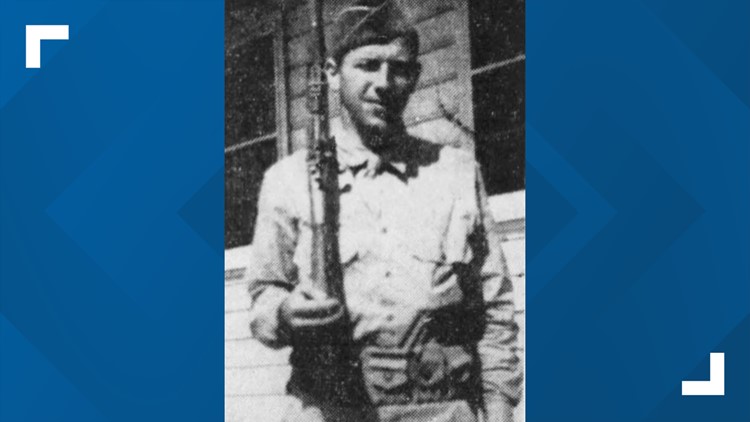ALLENTOWN, Pa. — The remains of a Pennsylvania soldier who was captured and died as a POW (prisoner of war) during World War II were identified and accounted for through DNA testing last year, the Defense POW/MIA Accounting Agency announced Monday.
U.S. Army Private Earl E.R. Siebert, of Allentown, was 23 years old and serving as a member of Headquarters Company, 803rd Engineer Batallion (Aviation) in late 1941 when Japanese forces invaded the Philippine Islands, the DPAA said.
Intense fighting continued until the surrender of the Bataan peninsula on April 9, 1942, and Corregidor Island on May 6, 1942.
Siebert was one of thousands of U.S. and Filipino service members who were captured and interned at POW camps when U.S. forces in Bataan surrendered to the Japanese. They were subjected to the 65-mile Bataan Death March, according to the DPAA.
The DPAA detailed how Seibert was then held at the Cabanatuan POW Camp #1, where more than 2,500 POWs perished during the war.
According to the prison camp and other historical records, Seibert died July 27, 1942, and was buried alongside other deceased prisoners in the Cabanatuan Camp Cemetery in Common Grave 225.
After the war ended, American Graves Registration Service (AGRS) personnel exhumed those buried at the Cabanatuan cemetery and relocated the remains to a temporary U.S. military mausoleum near Manila.
In 1947, the AGRS examined the remains in an attempt to identify them; three sets of remains from Common Grave 225 were identified, but the rest were declared unidentifiable.
The unidentified remains were buried at the Manila American Cemetery and Memorial (MACM) as Unknowns, the DPAA continued.
In 2018, the remains associated with Common Grave 225 were disinterred and sent to the DPAA laboratory for analysis.
To identify Seibert’s remains, scientists from DPAA used anthropological analysis as well as circumstantial evidence. Additionally, scientists from the Armed Forces Medical Examiner System used mitochondrial DNA (mtDNA), Y-chromosome DNA (Y-STR) and autosomal DNA (auSTR) analysis.
Although interred as an Unknown in MACM, Seibert’s grave was meticulously cared for over the past 70 years by the American Battle Monuments Commission (ABMC).
Seibert's burial date and location will be determined by his family.



